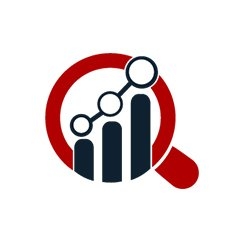Geriatric Population and Pregnancy-Related Nausea Contribute to Steady Growth in the Nausea Medicine Market

Geriatric Population and Pregnancy-Related Nausea Contribute to Steady Growth in the Nausea Medicine Market
Beyond specific triggers like chemotherapy and travel, certain demographic factors and physiological conditions contribute significantly to the steady growth of the nausea medicine market. The increasing global geriatric population and the common experience of pregnancy-related nausea are two such key drivers, creating a consistent demand for safe and effective antiemetic therapies tailored to these specific patient groups.
The global population is aging, leading to a larger number of elderly individuals who are more susceptible to various health conditions that can manifest with nausea and vomiting. These can include gastrointestinal disorders, medication side effects (polypharmacy is common in this age group), balance issues leading to dizziness and nausea, and other age-related ailments. As the geriatric population continues to expand, the demand for appropriate nausea medications that are safe and well-tolerated in older adults is also on the rise. Healthcare providers need to carefully consider potential drug interactions and age-related physiological changes when prescribing antiemetics for this population, often favoring medications with fewer central nervous system side effects.
Pregnancy-related nausea and vomiting, commonly known as "morning sickness," is another significant contributor to the nausea medicine market. Affecting a substantial proportion of pregnant women, particularly during the first trimester, this condition can range from mild discomfort to severe hyperemesis gravidarum, requiring medical intervention. The desire for safe and effective remedies to alleviate pregnancy-related nausea is high, driving demand for antiemetic medications specifically approved for use during pregnancy. Healthcare professionals often recommend non-pharmacological approaches initially, but when these are insufficient, safe and well-studied medications become necessary, contributing to the steady growth of this segment of the market. The focus on the safety of both the mother and the developing fetus is paramount when prescribing nausea medications during pregnancy, leading to a demand for drugs with established safety profiles.
The distinct physiological characteristics and potential comorbidities of geriatric patients and pregnant women necessitate tailored approaches to nausea management. This creates a demand for a range of antiemetic formulations and delivery systems that are appropriate for these specific populations. For instance, easily swallowable formulations or alternative delivery methods might be preferred for elderly patients with dysphagia, while medications with a strong safety profile are essential for pregnant women.
The increasing awareness among healthcare providers about the prevalence and impact of nausea in these populations also contributes to the demand for effective treatments. Recognizing the potential for nausea to significantly affect the quality of life and overall health of geriatric patients and pregnant women leads to more proactive management strategies and a greater likelihood of prescribing antiemetic medications when necessary.
Furthermore, ongoing research into the specific causes and mechanisms of nausea in these populations is leading to a better understanding of how to manage it effectively and safely. This research can inform the development of new and improved antiemetic therapies that are specifically tailored to the needs of geriatric patients and pregnant women.
In conclusion, the expanding global geriatric population and the widespread experience of pregnancy-related nausea are significant demographic and physiological factors contributing to the steady growth of the nausea medicine market. The unique needs and safety considerations for these patient groups necessitate tailored treatment approaches and drive the demand for a range of safe and effective antiemetic therapies, ensuring a consistent and growing market segment.
- Questions and Answers
- Opinion
- Motivational and Inspiring Story
- Technology
- Live and Let live
- Focus
- Geopolitics
- Military-Arms/Equipment
- Güvenlik
- Economy
- Beasts of Nations
- Machine Tools-The “Mother Industry”
- Art
- Causes
- Crafts
- Dance
- Drinks
- Film/Movie
- Fitness
- Food
- Oyunlar
- Gardening
- Health
- Home
- Literature
- Music
- Networking
- Other
- Party
- Religion
- Shopping
- Sports
- Theater
- Health and Wellness
- News
- Culture

